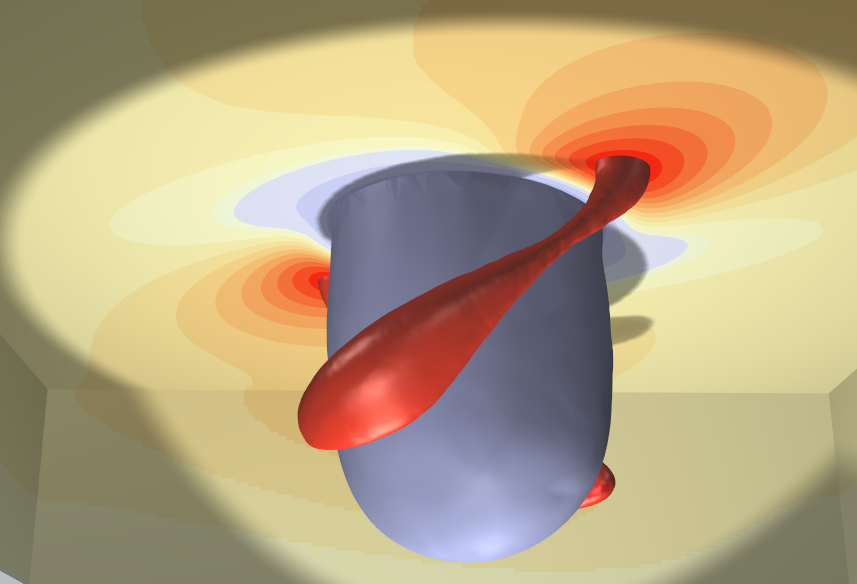Proceedings of the 29th Int Conf IEEE-EMBS, Lyon, August 2007, pp 6330-6333.
other versions
abstract
Myocardial ischemia leads to an efflux of potassium ions from affected cells. The resulting depolarization of the resting membrane is one of the main features of ischemic myocardium. It has been shown experimentally that a part of the surplus interstitial potassium is transported out of the ischemic zone, even if no coronary blood flow is present in the affected area. We propose to model this transport mechanism mathematically with a diffusion equation. This model explains the measured spatial profiles of extracellular potential and potassium concentration. In addition, it allows a quantitative prediction of the transmembrane current that flows as a result of ischemia-induced depolarization. This current is thought to play a role in arrhythmogenicity, which is an important cause of mortality in acute myocardial infarction. Our model predicts that this current reaches its maximum exactly on the border of the hypoxic area. An important depolarizing current would be present just within the border, where hypoxia is accompanied by a resting membrane potential that is only slightly elevated, due to coupling with the adjacent normal tissue. Still, in the presence of potassium transport the predicted current density is not large enough to explain ectopic activation on the lateral border of the ischemia. This suggests that activation is more likely to occur at the endocardium, where the potassium gradient is steeper.
lay abstract
The ability to determine what a theory predicts is essential to science. In complex systems, such as the heart, prediction can require extensive use of mathematics. We then use a "mathematical model" of the heart. This paper deals with a rather technical detail of mathematical heart models: the transport of potassium ions in the tissue. Normal muscle contains a small concentration of potassium, which it requires to do its work. When there is not enough oxygen supply to the muscle ("ischemia"), as happens during a heart attack, much more potassium than usual leaks out of the cells and ends up in the extracellular space. However, rather than being stuck in the ischemic zone, potassium ions move slowly towards the non-affected regions of the heart. This came as a bit of a surprise when it was initially discovered, because there is presumably no blood flow in the affected area. Thus, it is not known how the potassium ions are transported. However, we have previously found a mathematical description of this phenomenon. This can help in creating more realistic mathematical models of ischemia, and gives us a clue about the unknown mechanism. In addition, it can help to understand the what is happening in the border of the ischemic area. This border is a frequent source of ventricular tachycardia and fibrillation, disorganized beating of the heart that can suddenly kill a victim of a heart attack who might otherwise be rescued. Our modeling work may ultimately help to understand how this disorganized beating starts and how it may be prevented.
funding
Computational resources for this work were provided by the
Réseau québécois de calcul de haute performance
(RQCHP).
